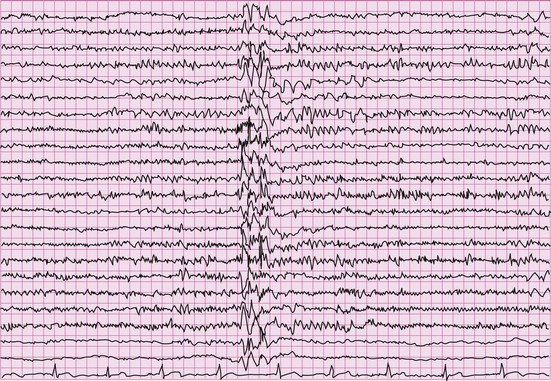Problem 39 A young man with depressed conscious state and seizures
A young man is brought into the emergency department early one morning. He was found ‘unconscious’ in the street and an ambulance called. There were no witnesses. Immediate assessment shows that his airway is intact and patent, he has normal colour, respiratory rate and pulse oximetry. There is no circulatory compromise. There are no obvious injuries.
He is stuporose and responds with sluggish but purposeful limb movements to painful stimuli. He groans, but does not make any comprehensible sounds. His Glasgow coma score is 6 (E1, V2, M3). He has a temperature of 37°C and cardiorespiratory examination is normal. The pupils are mid-position, equal and reactive and the optic fundi are normal. The plantars are downgoing. He has no neck stiffness and Kernig’s sign is negative. No focal neurological abnormality can be elicited. The rest of the physical examination is normal.
An electroencephalogram (EEG) is performed (Figure 39.1), as one had not been done since diagnosis many years ago. This shows 4–5 Hz paroxysmal generalized polyspike and wave discharges consistent with the diagnosis of primary generalized epilepsy.
Answers
A.1 Hypoglycaemia should be promptly excluded by blood glucose estimation.
Further examination should be undertaken for evidence of:
• Medication usage (medical alert bracelet, personal details in pockets, any information about medications such as sedatives, antidepressants or illicit drugs).
• Look for a form of identification or any other personal items that will enable you to contact relatives or friends. Most importantly, these people may be able to give a history.
Stay updated, free articles. Join our Telegram channel

Full access? Get Clinical Tree



